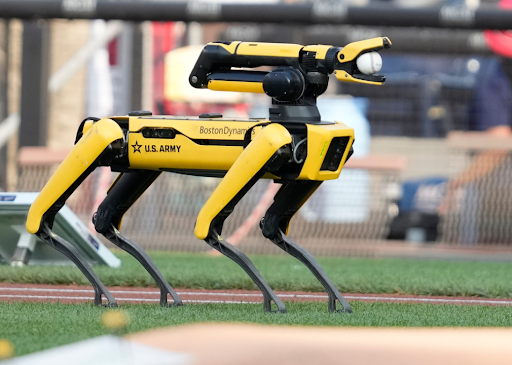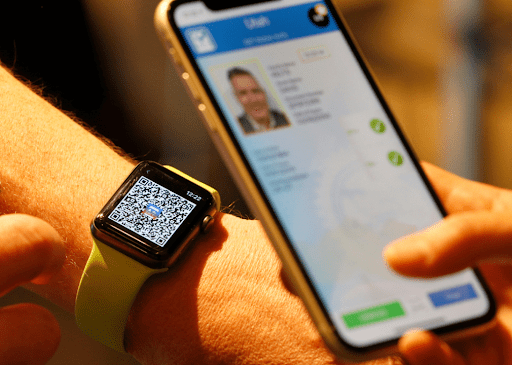Many devices used daily by the civilian population have surprising origins in the military. GPS, which has become essential to many aspects of transportation, is a product of the space race of the 1950s and ’60s. Drones, which now prowl the skies surveying and filming, have roots in the first pilotless vehicles in World War I.
War and conflict have often driven innovation, leading to a symbiotic relationship between the military and commercial sectors. With national security rapidly evolving, the Department of Defense (DOD) is maintaining its edge by investing $143 billion of its $849 billion budget for 2025 in research and development as well as the procurement of technology developed in the commercial sector.
This comes after Tech Inquiry reported the DOD paid $28 billion to Microsoft, Amazon, and Alphabet from 2018-22. Venture capital firms spent almost $100 billion on defense technology from 2021-23, according to data from PitchBook.
The defense sector has leaned on Silicon Valley so much that the 2024 SXSW festival featured a panel on defense tech. Uniqode analyzed resources from the Department of Defense and news reports to compile this list of four ways the military incorporates commercial technologies into warfare and national security efforts.
Artificial intelligence
While artificial intelligence (AI) has only recently exploded in the mainstream, the DOD has been working with it for decades. It is now partnering with tech companies to integrate AI into the nation’s defense infrastructure, using Al in data-driven military applications such as reconnaissance and intelligence and improving cybersecurity and computation. On the ground, AI helps acquire and identify targets and even automate vehicles and weapons.
While these advancements can reduce margins of error for complex tasks and increase the safety of troops, AI is still far from perfect. There are serious ethical concerns regarding its use for military purposes. The Arms Control Association cautions that increased reliance on AI could lead to rapid conflict escalation and instability concerning nuclear weapons. Other concerns—including facial recognition technology failures that have resulted in wrongful arrests—suggest it could cost lives and cause catastrophic collateral damage.
The DOD has sought to minimize such risks by developing a framework for implementing and using AI. However, this emerging technology still requires tempering from the military and private sectors to ensure safe use.
QR Codes
Japanese company Denso Wave developed quick response (QR) Codes in 1994 as an alternative to barcodes. Since then, the black and white squares have appeared on everything, such as inventory, advertisements, and documents needing authentication. QR Codes provide an advantage over barcodes in that they are still functional if dirty or damaged. They also have a greater capacity to store information.
Such technology translates well to a military environment. Consequently, QR Codes are replacing fuel keys at U.S. military bases worldwide, with plans for the system to be operational at more than 600 fuel stations by 2025. This application of QR Codes will offer increased security and timely resource tracking.
The Marine Corps has also implemented technology to improve the efficiency of maintenance in barracks. That system, dubbed QSRMax, provides a digital means for submitting maintenance requests, improving communication and accountability, helping resolve issues more efficiently, and reducing administrative tasks for stretched-thin personnel.
Cloud computing
Many data-intensive fields are moving from hardwired storage to more widely accessible cloud-based computing. At the end of 2022, the DOD awarded contracts worth up to $9 billion to Google, Amazon Web Services, Microsoft, and Oracle for developing the Joint Warfighter Cloud Capability program. The program aims to provide commercial cloud capabilities to the DOD directly from the providers.
It was to be employed in addition to other cloud-based services already in use, greatly expanding their capabilities. The result is readily accessible information for operations and administration across varying classification levels. The move to cloud-based computing cuts down on the equipment warfighters need in the field to access information and operational plans to maintain a tactical edge. Moving to the cloud also reduces the equipment and maintenance that physical data storage requires.
3D printing
The commercial manufacturing industry has used 3D printing for decades, revolutionizing the production process from prototyping to fully finished components. In the military, 3D printing equipment has helped soldiers and others maintain and repair equipment in various stages of service life, hard-to-find gear, and discontinued parts.
Vehicles, aircraft, and weapons still in service but needing new components can remain operational with these 3D-printed parts. The technology has advanced from simply providing plastic parts to a joint venture among Rock Island Arsenal, Ingersoll Machine Tools, and other entities, which can make fully printed metal vehicle hulls without welded joints or heat treatments.
Over the next 15 years, the Army alone will invest $4.5 billion to improve its industrial capabilities, and 3D printing will account for a significant portion of that investment.
The bottom line
The DOD is reshaping military strategy by adopting commercial technologies. AI, cloud computing, QR Codes, and 3D printing show how civilian and military innovation now overlap.
This trend continues to grow, with billions in defense tech investment. Yet the military must balance operational gains against ethical and security risks. Success requires strong oversight while maintaining partnerships that keep America’s defense edge.

















